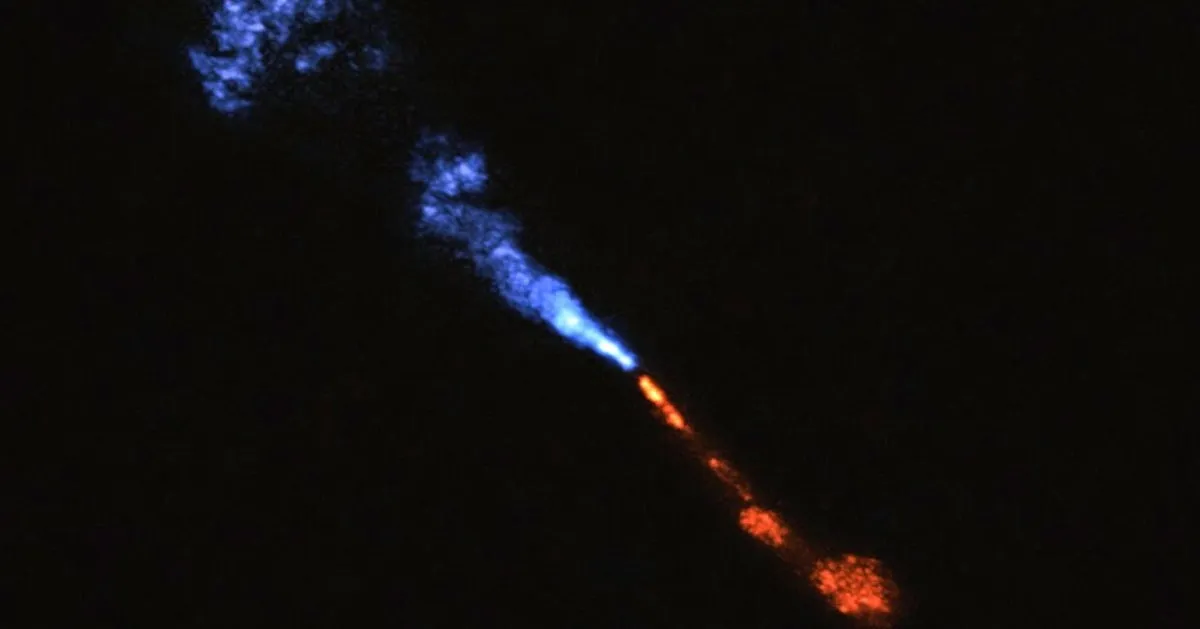
Astronomers have made a groundbreaking discovery, revealing the earliest seeds of rocky planets forming in the gas surrounding a young sun-like star. This remarkable finding offers an unprecedented glimpse into the early stages of our own solar system's formation. The research team, led by Melissa McClure from Leiden Observatory in the Netherlands, announced their findings on Wednesday, describing it as a unique snapshot of “time zero,” when new worlds begin to take shape.
“We’ve captured a direct glimpse of the hot region where rocky planets like Earth are born around young protostars,” McClure stated. “For the first time, we can conclusively say that the first steps of planet formation are happening right now.” The observations provide invaluable insights into the inner workings of an emerging planetary system, according to Fred Ciesla from the University of Chicago, who was not involved in the study published in the journal Nature.
The findings stem from a collaborative effort between NASA’s Webb Space Telescope and the European Southern Observatory (ESO) in Chile. Together, they unveiled early signs of planetary formation around the young star known as HOPS-315. This star is comparable to our sun, yet much younger, estimated to be between 100,000 to 200,000 years old and located approximately 1,370 light-years away from Earth.
In a cosmic first, McClure and her team observed solid specks condensing in the gas disk surrounding HOPS-315, indicating the initial stages of planet formation. A gap in the outer region of the disk allowed researchers to peer inside due to the star's tilt towards Earth. They discovered silicon monoxide gas and crystalline silicate minerals, which are believed to be the building blocks of solid materials that formed in our solar system over 4.5 billion years ago.
The ongoing process around HOPS-315 is occurring in a region akin to the asteroid belt between Mars and Jupiter, where leftover materials from our solar system's planets reside. “The condensing of hot minerals was never detected before around other young stars, so we didn’t know if it was a universal feature of planet formation or a unique aspect of our solar system,” McClure explained. “Our study suggests that it could be a common occurrence during the earliest stages of planet formation.”
While previous studies have focused on younger gas disks and more mature disks with potential planet candidates, there has been no specific evidence for the onset of planet formation until now. The stunning imagery captured by the ESO’s Alma telescope network shows the emerging planetary system as a glowing entity against the dark cosmos. “It’s impossible to determine how many planets might form around HOPS-315,” McClure noted. With a gas disk as massive as that of our sun, it could potentially yield eight planets in a million years or more.
Merel van ’t Hoff from Purdue University, a co-author of the study, expressed excitement about the possibility of discovering more budding planetary systems. By exploring a wider range of celestial bodies, astronomers aim to identify commonalities and determine the essential processes necessary for forming Earth-like planets.
“Are there Earth-like planets out there, or are we uniquely special in our formation?” van ’t Hoff pondered, emphasizing the importance of this research in our understanding of the universe.